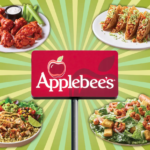Introduction to Golden Corral
Golden Corral, a popular American family-style restaurant chain, offers a vast buffet featuring a wide array of dishes. Founded in 1973 in Fayetteville, North Carolina, Golden Corral has grown to become one of the most beloved buffet restaurants in the United States. Known for its value and variety, Golden Corral serves breakfast, lunch, and dinner, providing an extensive selection that caters to diverse tastes and preferences.
The Evolution of Golden Corral
Early Beginnings
Golden Corral’s journey began in the early 1970s when James Maynard and William F. Carl conceived the idea of a steakhouse that could accommodate families looking for variety and value. The first Golden Corral restaurant opened its doors in 1973. It was a modest 175-seat steakhouse that emphasized no-frills dining with affordable pricing.
Expansion and Innovation
Throughout the 1980s and 1990s, Golden Corral refined its concept by introducing the Buffet & Grill format. This new setup included a variety of food stations where guests could watch their food being prepared. The introduction of the Brass Bell Bakery, which offers fresh rolls, cookies, pies, and more, became a hallmark of the Golden Corral dining experience. As the years progressed, the chain expanded its offerings to include healthier options and themed food nights, which further solidified its reputation as a versatile dining option.
Understanding Golden Corral’s Menu Offerings
Buffet Staples
Golden Corral’s buffet offers an impressive range of food groups and specialty items. The buffet includes sections like the Brass Bell Bakery, the Salad Station, the Carving Station, and various hot pots featuring American comfort foods, international dishes, and desserts. One of the most popular features is the breakfast buffet, which boasts everything from made-to-order omelets to pancakes, sausages, and hash browns.
Seasonal and Themed Variations
Apart from the standard offerings, Golden Corral also adapts its menu for seasonal variations and special occasions. For instance, during Thanksgiving and Christmas, patrons can enjoy seasonal dishes such as roasted turkey, ham, and festive desserts. This adaptability attracts a wider audience, looking for a festive dining experience without the hassle of cooking at home.
Golden Corral’s Business Model
Pricing Strategy
One of the key aspects of Golden Corral’s success is its pricing strategy. The restaurant offers a “pay one price” buffet model that is particularly appealing to families and large groups. This approach allows customers to enjoy a wide variety of dishes at a reasonable price, making it a go-to option for casual dining across the nation.
Franchise Model
As a franchisor, Golden Corral has grown substantially. The franchise model has allowed for rapid expansion across various states, enabling local entrepreneurs to manage their outlets. This model benefits from corporate advertising and centralized purchasing, while allowing for a degree of local control and customization that addresses regional tastes and preferences.
Challenges and Adaptations
Navigating Economic Fluctuations
Like many businesses in the hospitality industry, Golden Corral has had to navigate through economic downturns and changing consumer preferences. Economic challenges often impact disposable income, which can affect buffet-style restaurants significantly. Golden Corral has managed these challenges by adjusting its operational strategies, such as modifying menu items and offering special promotions to draw in customers.
Adapting to Health Trends
In response to growing health consciousness among consumers, Golden Corral has incorporated a range of healthier options, including fresh fruits, vegetables, and lean proteins. These additions cater to a broader audience, including those who are mindful of their dietary intake but still wish to enjoy a buffet experience.
The Future of Golden Corral
Technological Enhancements
Looking forward, Golden Corral is poised to integrate more technology into its services. This includes digital ordering processes, improved customer management systems, and potentially a more robust online presence to cater to the convenience that modern diners increasingly seek.
Sustainability Practices
As sustainability becomes more important to consumers, Golden Corral may also explore more environmentally friendly practices. This could involve reducing waste, improving energy efficiency in kitchens, and sourcing food more sustainably.
Conclusion
Golden Corral continues to stand as a testament to adaptability and customer satisfaction in the ever-evolving landscape of the American dining industry. With its rich history, broad appeal, and continual innovations, Golden Corral remains a staple for diners across the nation, promising a diverse and satisfying dining experience for families and food lovers alike.







